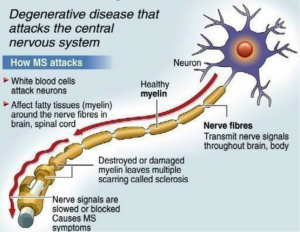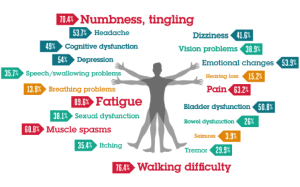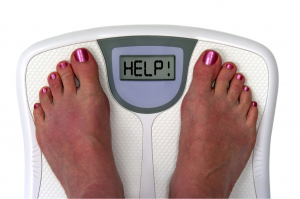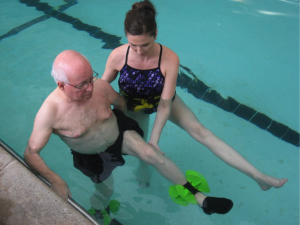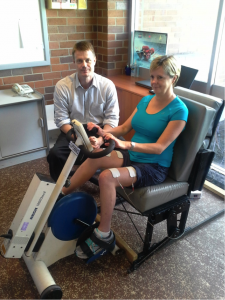While many of us have heard of Multiple Sclerosis (MS) and its devastating effect on an individual’s quality of life, research does not support many commonly held misconceptions, including the impact of exercise on MS.
WHAT IS MS?
Let us begin by reviewing what MS is. Simply stated, it is a progressive neurological disorder in which myelin, a fatty tissue surrounding the nerves in the brain and spinal cord, is degraded. This results in the production of scar tissue (sclerosis). Myelin is essential in transmitting impulses along nerves, so an absence of this tissue slows down and disrupts communication between the brain and body causing difficulties with muscle contraction, movement, and cognition. 3,4,6,7 Roughly 55,000 to 75,000 Canadians and greater than 2 million individuals worldwide are afflicted with MS. 1
Figure 1.
Symptoms of MS Include: 1,3,6,7
– Tingling/numbness of limbs
– Fatigue/lack of energy
– Poor balance & coordination
– Muscle Weakness
– Bowel & Bladder dysfunction
– Pain Movement disorders /paralysis – Heat sensitivity
Figure 2.
What many of us don’t realize is that although MS can be fatal, many individuals with MS have a normal lifespan.4 Another common myth associated with MS is that it leaves individuals immobile. 4 There is no doubt that MS reduces an individual’s mobility, however, if caught early and managed with appropriate treatment, individuals with MS can maintain mobility and delay or avoid the need to use wheelchairs or other assistive devices.4 MS can be classified as mild, moderate or severe, based on a scale of disability from 0-6 known as the Kurtzke Expanded Disability Status Scale.3 Scores of 0 indicate normal function, 1 indicates symptoms of MS without disability, and finally scores of 2-6 indicate increasing levels of impairment. 3
Many of us have difficulties motivating ourselves to go to the gym and be active, myself included. We may lack motivation, feel fatigued and simply lack the energy to go for that run. This inactivity can hasten the development of secondary health conditions such as: 5,6
-Obesity
-Coronary heart disease
-Muscular Weakness
-Osteoporosis or low bone mineral density
Figure 3.
Imagine how the 89.6% of individuals with MS who suffer from excessive fatigue felt when medical professionals told them they should engage in more exercise.
Contrary to what we may think, studies have shown that exercise can actually reduce generalized fatigue in individuals with MS.2,3,5,6 Individuals with MS who exercised at least 2 times per week for a minimum of 30 minutes saw improvements in their quality of life and decreases in fatigue and depression levels.4
Keeping the body active is a great strategy to maintain mobility and muscle function, but also to prevent secondary complications associated with sedentary behavior. For most people, regular exercise leads to increased muscular strength, endurance, and improved cardiorespiratory health, the same is true for individuals with MS.6 While exercise can’t reverse the nerve damage, it will keep the body strong and reduce the chances of developing secondary health conditions which complicate MS symptoms.
EXERCISE CONSIDERATIONS FOR INDIVIDUALS WITH MS
Temperature is a major consideration in individuals with MS since roughly 80% of individuals diagnosed with MS will experience general heat sensitivity.3 Exercising in warm environments and elevating core body temperatures too much have been shown to increase individual’s weariness, and reduce exercise workloads which can be achieved before the onset of exercise induced fatigue. This is because increased body temperature further slows the conduction of impulses in damaged nerves.6
Figure 4
Cooling the body, however, produces reductions in the symptoms associated with MS (white). 6 In light of this, it is advisable that patients with MS:
– Exercise in the morning when minimally fatigued and when daytime temperatures are lower
– Exercise indoors out of the heat of the sun in hot, humid summer months
– Engage in pool exercise in water temperature of 27-29 degrees Celsius. Water is a fantastic medium to allow for the dissipation of heat and can also be used to cool the body before performing on land workouts. 6
MUSCLE WEAKNESS & BALANCE
Poor transmission of nerve impulses may cause pronounced muscle weakness in individuals with MS. Weak musculature can result in poor balance and muscular coordination issues increasing the risk of falling and even fractures. In fact risk of fracture is 2 to 3.4 times greater in individuals with MS. 6
For this reason, it is recommended that individuals with MS perform cardiovascular exercise on a cycle ergometer or in a pool where the risk of falling is minimized. 6
Exercising in water has the additional benefit of providing a resistance to movement without any exercise equipment. The buoyancy of water also allows weak limbs to be supported through a greater range of motion. 7
Figure 5.
Figure 6.
EXERCISE PRESCRIPTION
Now that we’ve laid out the condition and all special considerations associated with MS, lets get to the “meat and potatoes”… how often, how long, and what muscle groups should be targeted?
For strengthening, and stretching exercises, particular focus should be placed on the major muscle groups of the body including the abdominals, hip flexors, hamstrings, groin muscles, buttock muscles, calf muscles, muscles which extend the neck, chest and anterior shoulder muscles. 3 These are all muscle groups we use on a daily basis in standing, walking, lifting or pushing objects. Weakness in one or more of these muscle groups may cause difficulty with activities of daily living. For example, weak buttock muscles may cause an abnormal walking gait in which one the hips drop while walking.
STRETCHING
Before you can begin strengthening muscles flexibility and good range of motion in the joints and muscles are essential. Increasing range of motion is done via stretching.
Stretching guidelines by the National MS Society suggest individuals with MS should:3,7
– Stretch daily and repeat the stretches at least twice per day
– Stretch until a pull is felt, but not to the point of pain
– Hold each stretch between 20 – 60 seconds.
– Avoid bouncing motions keep motions slow smooth and controlled
STRENGTH TRAINING
Now that joints are mobile, it is time to develop some muscular strength. Without some baseline strength, cardio and endurance exercises can be challenging, as a result some basic strengthening is usually performed before any intense cardio programs begin.
Strengthening progressions should begin with light resistance in the form of theraband tubing, progressing to exercise machines and finally to free-weight exercises. Free weights are the final progression because in free weight exercises many other muscles besides those we are specifically training are activated to stabilize the body.
Guidelines for Strength & Resistance Exercises are as follows: 3
– Exercise 2 – 3 times per week, cycling through a series of exercises targeting major muscle groups.
– Rest between exercises for at least 1 minute or until you feel ready for the next exercise bout
– 1 – 3 sets are recommended ensuring you start low and progress to more sets as you are ready. It is important to ensure that exercise is tolerable at all times.
– 8 – 15 repetitions is the general recommendation, once 15 repetitions of an activity can be completed within 2 consecutive exercise sessions, this is a sign that the intensity of the exercise should be increased.
CARDIOVASCULAR EXERCISE
Cardiovascular exercise aims to improve the health of your heart and lungs to allow individuals to cope with the physical demands placed on the body and prevent any secondary conditions such as coronary heart disease. Cardiovascular Workouts should be: 3
- 3 days per week alternating with strengthening workouts
– 20- 40 minutes per workout session is favourable, or multiple shorter exercise bouts adding up to this approximate time frame.
– Performed at an intensity described as fairly light to somewhat hard.
CONCLUSION
In patients with MS, persistent inactivity is quite common and can complicate and worsen MS symptoms decreasing their overall quality of life. Exercise affords these individuals the opportunity to take some control over the course of their condition and strengthen their bodies to maintain as much physical function as possible. Research has revealed that contrary to past beliefs that exercise increases fatigue in MS patients, exercise may actually relieve some fatigue and serve as a motivator. It is important to be mindful of special considerations for individuals with MS during exercise and begin at a low level of physical exertion and slowly progress. Overall with proper supervision and adherence to recommended exercise guidelines individuals with MS may greatly benefit from being physically active.
Nicole Geier BScKin Student
References
1. Asano, M., Duquette, P., Anderson, R., Lapierre, Y., & Mayo, N.E. (2013). Exercise barriers and preferences amoung women and men with multiple sclerosis. Disability & Rehabilitation, 35(5). 353-361. DOI: 10.3109/09638288.2012.742574
2. Dalgas, U. & Stenager, E. (2012). Exercise and disease progression in multiple sclerosis: can exercise slow down the progression of multiple sclerosis? Therapeutic Advances in Neurological Disorders, 5(2). 81-95. DOI: 10.1177/ 1756285611430719
3. Dawson, A. (2013). Strength and conditioning training for persons with multiple sclerosis. Journal of Australian Strength and Conditioning, 21(1). 58-66.
4. Martinez, G.G., & Kravitz, L. (2013). How Can Exercise Help People Who Have Multiple Sclerosis? – Studies show mild-to-moderate workouts ease the strain of living with MS. IDEA Fitness Journal, 10(5). 18-22.
5. Padgett, P.K., & Kasser, S.L. (2013). Exercise for Managing the Symptoms of Multiple Sclerosis. Physical Therapy, 93(6). 723-728.
6. White, L.J., & Dressendorfer, R.H. (2004). Review Article: Exercise and Multiple Sclerosis. Sports Med, 34(15). 1077-1100.
7. National Multiple Sclerosis Society. (n.d.).Exercise. Retrieved from: http:// www.nationalmssociety.org/Living-Well-With-MS/Health-Wellness/Exercise
Figure References
Figure1. Retrieved from: https://aaronattacksms.files.wordpress.com/2014/03/95402231-
multiple-sclerosis.jpg
Figure 2. Retrieved from: http://blog.mymsaa.org/wp-content/uploads/2013/12/ frequentsymptoms.png
Figure 3. Retrieved from: http://blogs.jpmsonline.com/wp-content/uploads/2014/12/Obesity.jpg
Figure 4. Retrieved from: https://s-media-cache-ak0.pinimg.com/736x/56/f9/ f7/56f9f7c60a78485cba8bbeff268e5075.jpg
Figure 5. Retrieved from:http://motorimpairment.neura.edu.au/wp-content/uploads/2014/06/MS- Photo-Che.jpg

